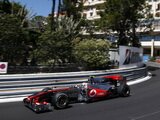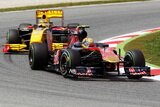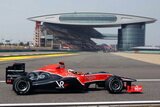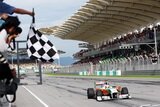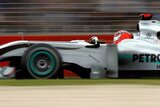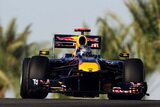
Round nine of the 2010 FIA Formula One World Championship visits Spain for the second time this season, as the Valencia Street Circuit hosts its third edition of this itinerant event. Skirting the harbour area of downtown Valencia, the circuit and its surrounding infrastructure were designed to make new use of facilities built for the 2007 America’s Cup.
The return to Europe after the North American leg on this year’s calendar, in Canada, will allow several teams to bring significant upgrades to their chassis for this race. As the season approaches the half-way mark, and with leading teams and drivers being closely matched (only 19 points separate the top five drivers, with 22 points between the two leading teams) the speed at which reliable mechanical developments can be brought to each event could prove decisive in determining the outcome of this year’s drivers’ and constructors’ championships.
As in 2008 and 2009, the Valencia Street Circuit is expected to be demanding on machinery, thanks to the narrow confines inherent to any street track layout. Ambient temperatures should be slightly lower than in previous years, as the race is being held two months earlier.
CHANGES TO THE CIRCUIT SINCE 2009
The kerbs on the exit of turns 5, 10 and 14 have been replaced by a 25mm high slant.
A two metre wide strip of artificial grass has been laid behind the kerb on the exit of turn 20.
FAST FACTS: GRAND PRIX OF EUROPE
The European Grand Prix was first part of the FIA Formula One World Championship in 1983, when the race was held at Brands Hatch, England. It was held there once again in 1985 and it has also been staged at Donington, England (1993) and Jerez, Spain (1994 and 1997). The most popular venue for the European GP was Germany’s N?rburgring circuit, which hosted the race 12 times: 1984, 1995-6, and from 1999-2007.
Notable European Grands Prix include: 1985 - Nigel Mansell’s first Formula One win - 1993, Ayrton Senna’s domination in torrential rain - 1996, Jacques Villeneuve’s first Formula One win - 1997, Mika H?kkinen’s first Formula One win and the contentious conclusion to that year’s drivers’ world championship – won by Jacques Villeneuve after a lap 48 collision with Michael Schumacher - 1999, the sole Formula One victory for Stewart Grand Prix, in a car driven by Johnny Herbert - 2007, Grand Prix debutant Markus Winkelhock, driving a Spyker, led the race in heavy rain before a re-start.
Valencia Street Circuit is one of two Formula One facilities associated with the city. The Circuit Ricardo Tormo is a permanent track used regularly during the off-season for Formula One testing, as well as being a host venue for the MotoGP championship. At the first 2010 pre-season Formula One test in February, sell-out crowds attended the track, drawn by the chance to see Spanish double champion Fernando Alonso begin his Ferrari career and by seven-time champion Michael Schumacher returning to Formula One with Mercedes.
Valencia is Spain’s self-styled ‘Paella Capital’. Authentic paella originated around 200 years ago near lake Albufera, a freshwater lagoon south of Valencia where conditions were ideally suited to rice farming.
CIRCUIT DATA (VALENCIA STREET CIRCUIT)
Length of lap: 5.419km
Lap record: 1:38.683 (Timo Glock, 2009, Toyota)
Start line/finish line offset: 0.000km
Total number of race laps: 57
Total race distance: 308.883km
Pitlane speed limits: 60km/h during practice sessions; 100km/h during qualifying and race
ADDITIONAL MEDIA OPPORTUNITIES
Qualifying: All drivers eliminated in Q1 or Q2 will be available for media interviews immediately after the end of each session, as will drivers who participated in Q3, but who are not required for the post-qualifying press conference. Location tbc.
Race: Any driver retiring before the end of the race will be available for media interviews after his return to the paddock. In addition, all drivers who finish the race outside the top three will be available for media interviews immediately after the end of the race. Location tbc.
Comments:


